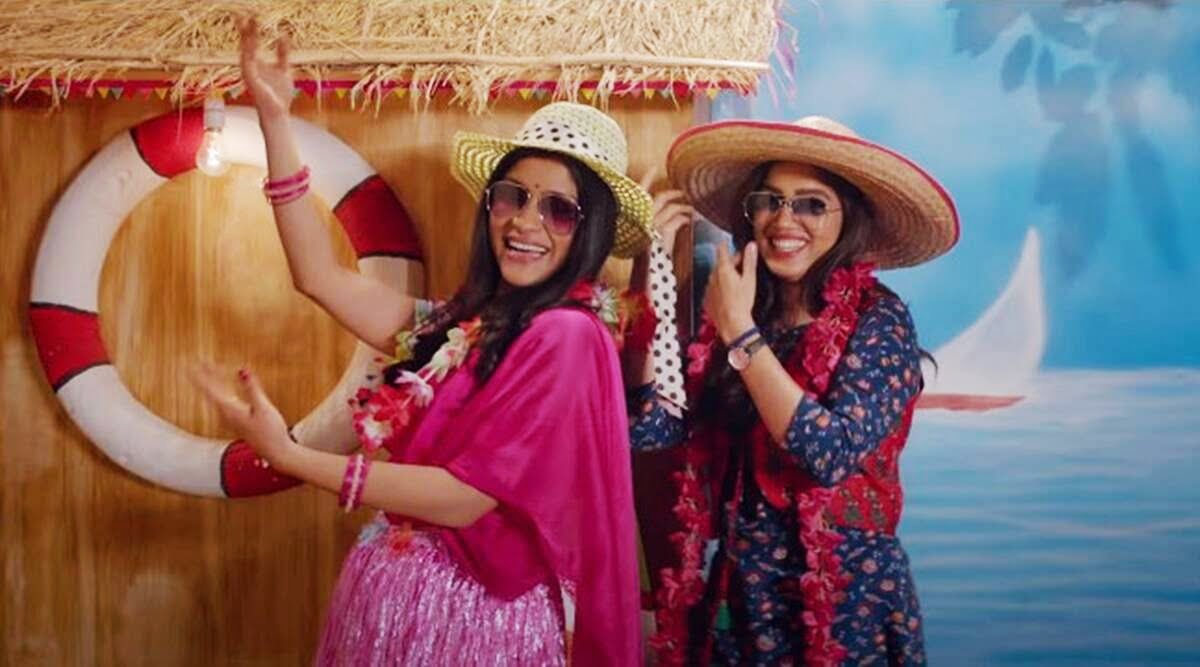I ordinarily wouldn’t go out of my way to share my thoughts on a film like Dolly Kitty Aur Woh Chamakte Sitare (the film). Because, as a man, is it fair for me to critique one of the few Indian films that focus on the desires, thoughts, and feelings of women? Wouldn’t it be considered appropriation if I give my opinion on dilemmas that I’ve never faced in my life? That was my initial thought. However, after reading some reviews from other critics on Dolly Kitty Aur Woh Chamakte Sitare implying that the film “was all over the place“, I felt like maybe they were missing the point. I wanted to share my experience about how much I enjoyed watching this film and going through the journey of watching two women figure out what they want and actually take a step towards achieving their desires.
Also read: In Her Latest, Alankrita Srivastava Dissects How Women’s Sexuality Is Capitalised
Dolly Kitty Aur Woh Chamakte Sitare’has strong characters and touches on a lot of topics. Yes, it’s messy and complicated, but I think that’s the point. There are so many different forms of discrimination that women face all at once so why shouldn’t a film about women reflect exactly that?
Dolly Kitty Aur Woh Chamakte Sitare has strong characters and touches on a lot of topics. Yes, it’s messy and complicated, but I think that’s the point. There are so many different forms of discrimination that women face all at once so why shouldn’t a film about women reflect exactly that?
Strong Characterization Makes You Root for the Protagonists
Dolly Kitty Aur Woh Chamakte Sitare is written and directed by Alankrita Shrivastava, whose previous works include the widely appreciated ‘Lipstick Under my Burkha’ and the last two episodes of the web series ‘Made in Heaven.’ In both pieces of work, she does an incredible job of developing strong characters that we are rooting for. We will find ourselves empathising and rooting for her characters in these. This film is no different.
As a man, I found Alankrita’s strong writing and the beautiful performances by the protagonists showed us the world of women’s desires without a trace of judgment. So, when we see Dolly (Konkona Sen Sharma) struggle to be satisfied by her husband, we want to see her explore her chemistry with the soft-spoken delivery boy who keeps showing up at her house. Their dates are cute and heartwarming, despite some of them taking place in graveyards and dark alleys. Alankrita’s focus on Dolly’s needs allows the audience to ignore the sketchy backdrops and simply, enjoy those small moments.

Another important element of characterization is emotion. As we follow Kitty (Bhumi Pednekar) through her journey in moving to Noida, we feel her angst while waiting for her friend on an empty street at night. We feel the amazement in her eyes when she walks into a hotel for the first time. We feel the pain and disappointment she faces during her first sexual encounter. The camera’s focus on how Kitty reacts to these events allows us to empathize with her and Bhumi does an excellent job in executing these emotions.
The Noise is Essential to Understand the Struggle
Admittingly, Dolly Kitty Aur Woh Chamakte Sitare does touch on several different subjects at once. We go from marital intimacy, to women’s safety, to freedom of speech, to gender norms in school and many more. It is overwhelming and at times, you are left with some unanswered questions. But something I realized while watching the film is that women deal with these issues in addition to trying to live a normal life. And so, to me, the noise and the confusion in the film allowed us to feel the pressure these characters are facing, and that’s what let me empathise with these characters. Maybe the film would have been considered more streamlined, had it not touched upon issues such as eve-teasing, Dolly’s fraught relationship with her mother and how she deals with her son’s non-identification with his assigned gender, but the truth is such that we have women around us who deal with such ordeals and more on a day-to-day basis.

Perhaps, some audiences require a certain level of sensationalism to process the severity of an issue? It’s unfortunate, but an effective tool.
As a man, I think it’s extremely hard to understand the multi-faceted levels of discrimination that women face every day. For that reason, the depiction in Dolly Kitty Aur Woh Chamakte Sitare of a wide range of topics enhanced my viewing experience, contrary to some critics’ responses to the film. Do I wish some of these themes were addressed and not merely brought up in the film? Maybe, but I don’t think it’s fair to hold a film accountable to address every issue it brings up as well. Why should a film be held responsible for exploring or resolving every theme? We didn’t hold Gully Boy accountable for depicting domestic violence and not “exploring it enough,” so why not do the same for this film?
It is an exciting journey. It’s an emotional roller coaster, and the phenomenal direction and strong characterisation allow us to be invested in the journey of these two strong-willed women. I hope that we continue seeing more films that explore the daily struggles and desires of women.
Featured Image Source: The Indian Wire
About the author(s)
Sagar Galani's writing focuses on gender inequality and toxic masculinity in Indian media and society. He currently works in Mumbai in real estate and hotel development. He has completed his Bachelors in Applied Economics from Cornell University. In his free time, you can find Sagar performing improv, diving or reading about personal finance.




